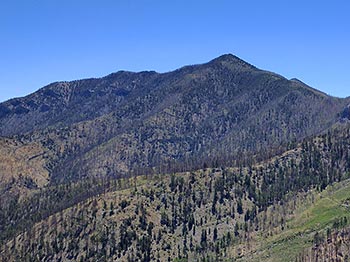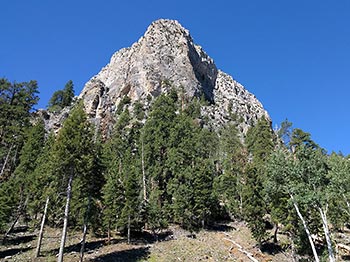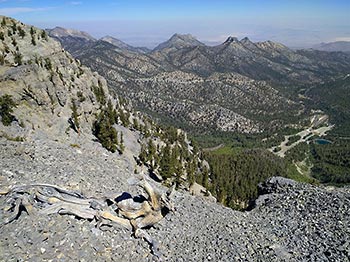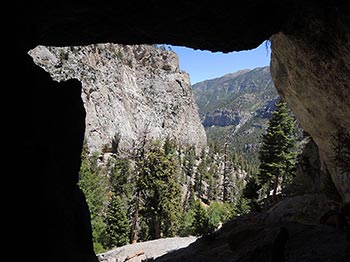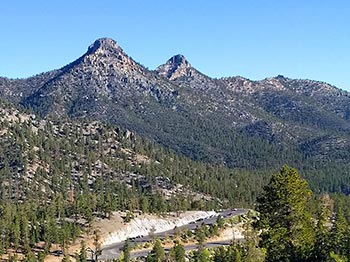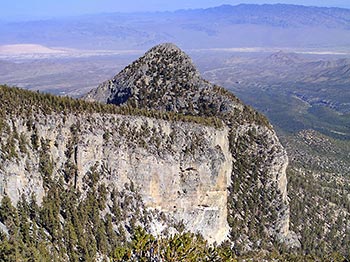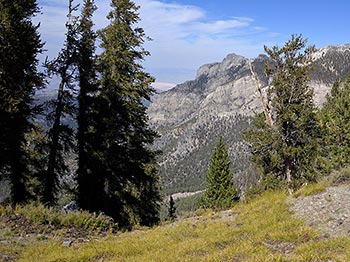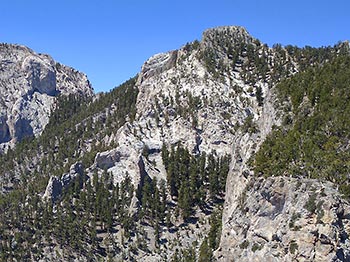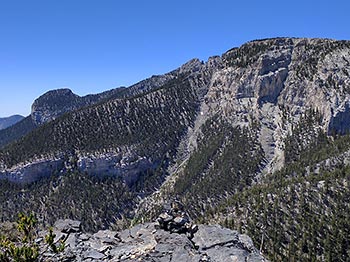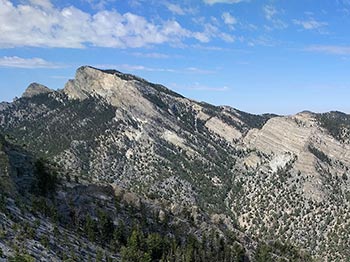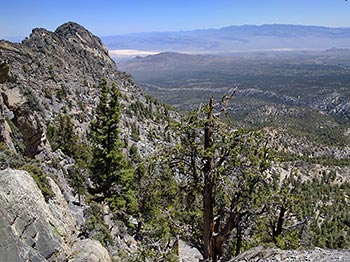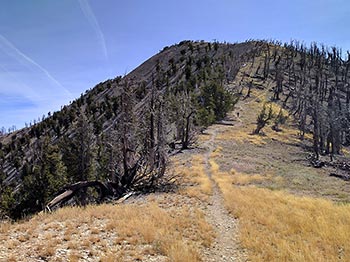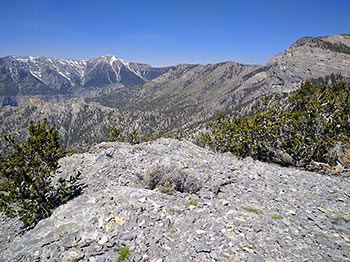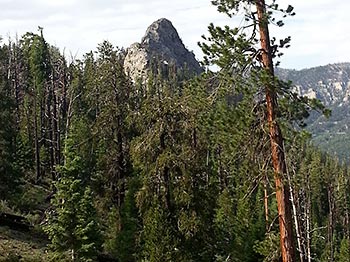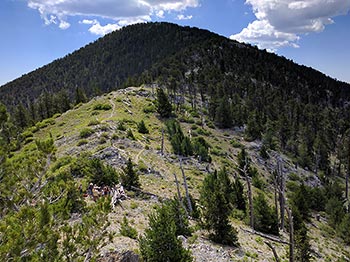Mt. Charleston Hikes
About Mt. Charleston
Named for nearby Mount Charleston, the highest point in Clark County, the town is in a valley of the Spring Mountains to the northwest of Las Vegas, noted for its hiking trails, and for the Mount Charleston Lodge, a rustic hotel. At an elevation of approximately 7,500 feet, temperatures are much lower than in Las Vegas, which has an elevation of about 2,000 feet, making it a popular place for Las Vegans to vacation. The mean high temperature is 20.4 degrees (Fahrenheit) cooler than in Las Vegas.
Mount Charleston is a year-round getaway for Las Vegas's residents and visitors, with a number of hiking trails and a small ski area in Lee Canyon. The mountain, which is snow-capped more than half the year, can be seen from parts of the Las Vegas Strip when looking toward the west. Mount Charleston has nearly 200 camp sites and over 150 picnic areas, some of which are RV-accessible.
There are some 40 mi (64 km) of trails located within the Mount Charleston Wilderness Area, which can be accessed from the Spring Mountains National Recreation Area, commonly known as Mount Charleston.
The Mount Charleston Wilderness Area consists of a total of 57,442 acres (23,246 ha) of protected wilderness, with the BLM managing 2,142 acres (867 ha) and the rest by the U.S. Forest Service. The Wilderness Area extends across the entire Spring Mountains Range, including the highest point of Mount Charleston (Charleston Peak), at an elevation of 11,908 ft (3,630 m).
The Spring Mountains are a sky island ecosystem. With an area around 860 square miles (2,200 km2), and a vertical range of nearly 2 miles (3.2 km), the mountains encompass a wide variety of habitats, and the biological diversity is probably greater than anywhere else in Nevada; 37 species of trees are known (more than any other Nevadan range), and 600 species of vascular plants have been reported from the Red Rock Canyon National Conservation Area alone.
The highest point is Mount Charleston (officially Charleston Peak), at 11,918 ft (3,633 m). The area around Mt. Charleston is protected in the Mount Charleston Wilderness. In addition to Mount Charleston, other major summits in the Spring Mountains range include Bonanza Peak, McFarland Peak, Mummy Mountain, Griffith Peak, Bridge Mountain, Mount Wilson, and Mount Potosi.
Ideal time of year for hiking Mt. Charleston is Summer: June-September
DISCLAIMER: Hiking is a dangerous activity which may result in serious injury or death. You are solely responsible for your own health and safety. If you attempt to find hikes on your own without an experienced guide or without experience yourself, you risk injury to yourself, to others, and/or property. Your use of this website constitutes agreement in our 'terms of use' which is that you agree you are solely responsible for you and we are not liable for any predicament you put yourself in. Information on this website is subject to errors, change, and no warranty exists for its accuracy. Information shown on this website is for experienced hikers only.


